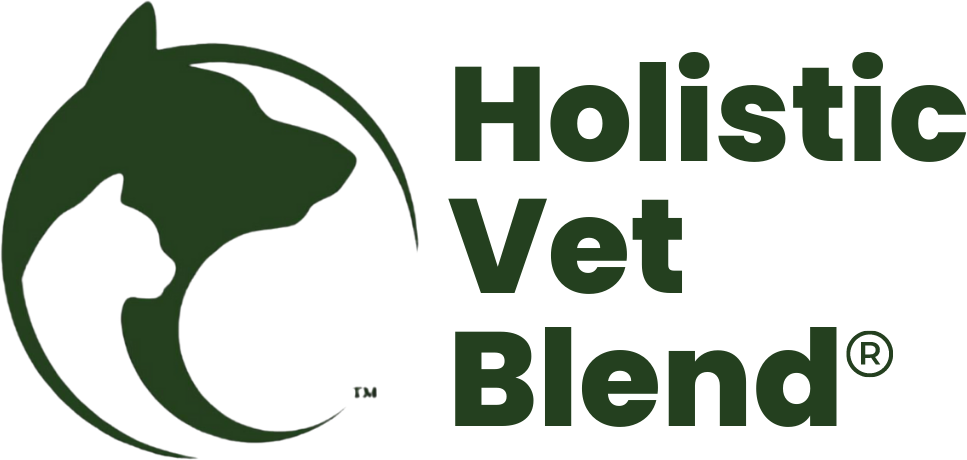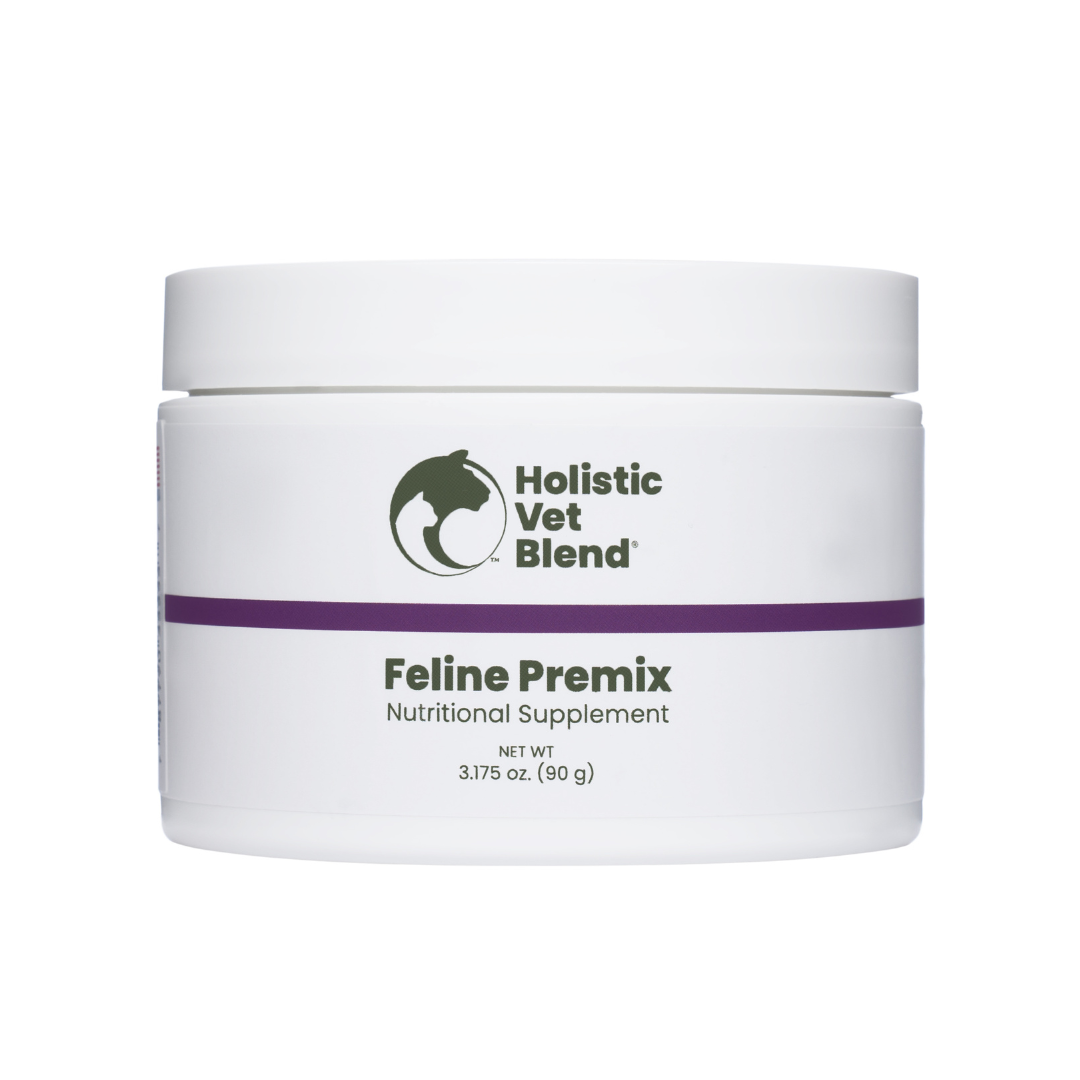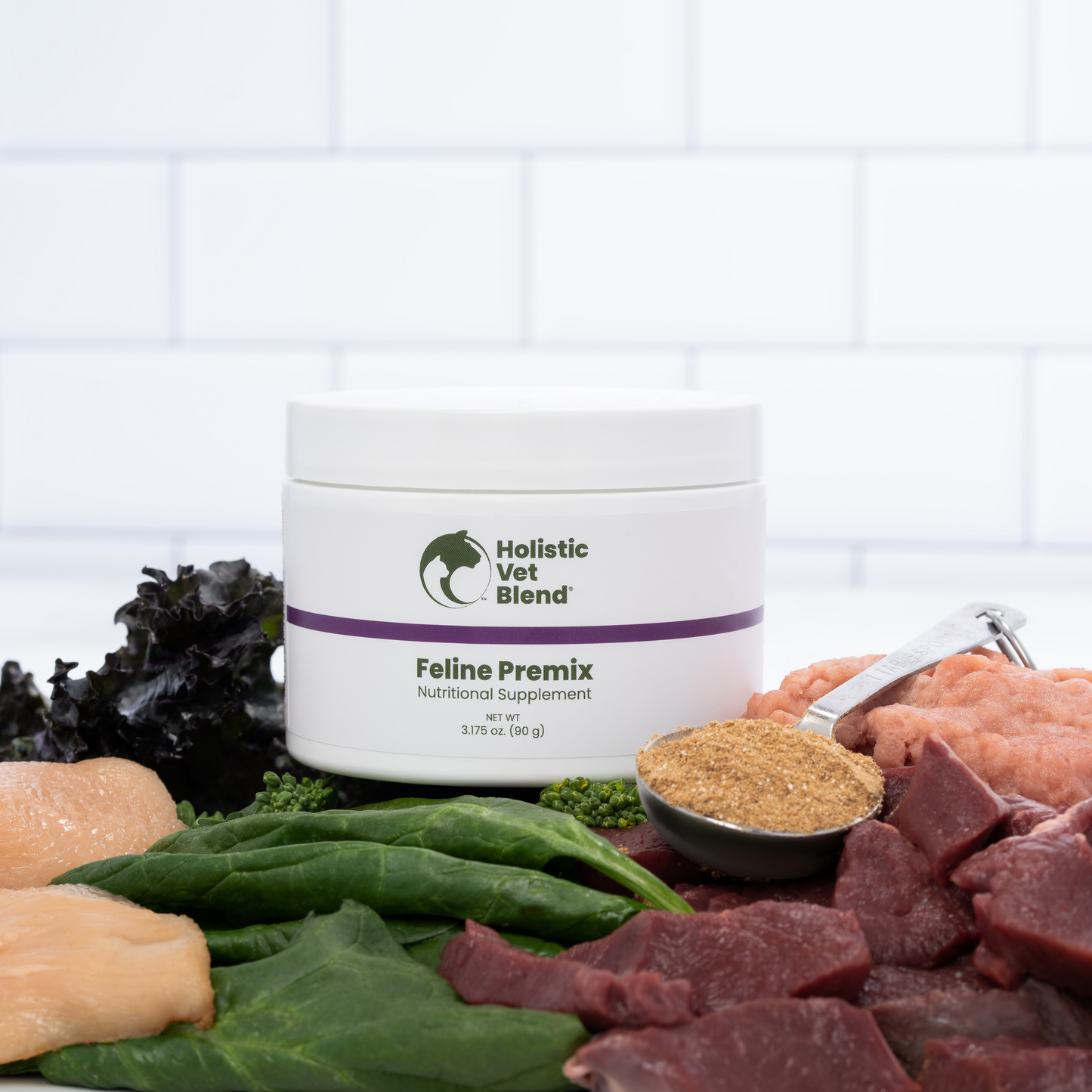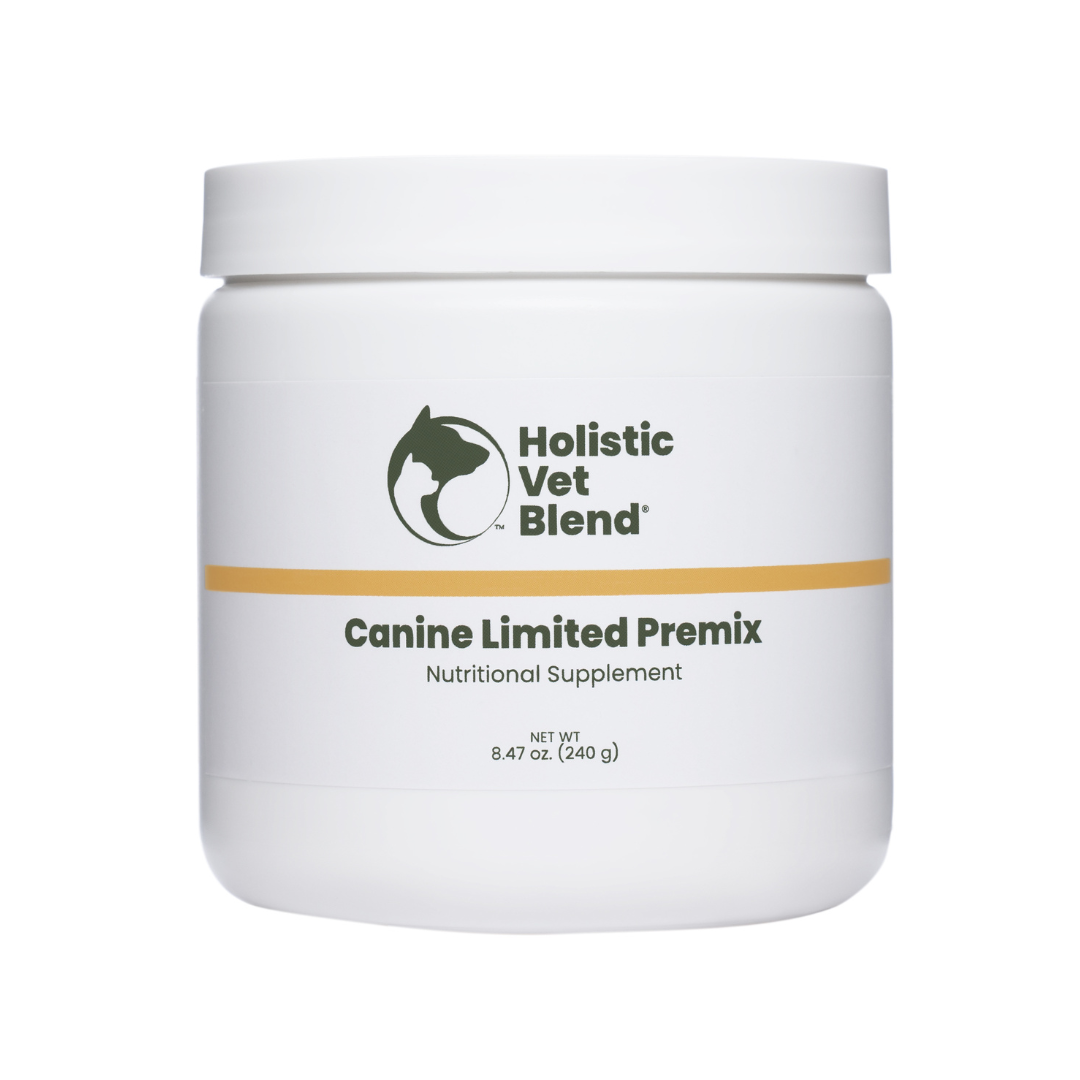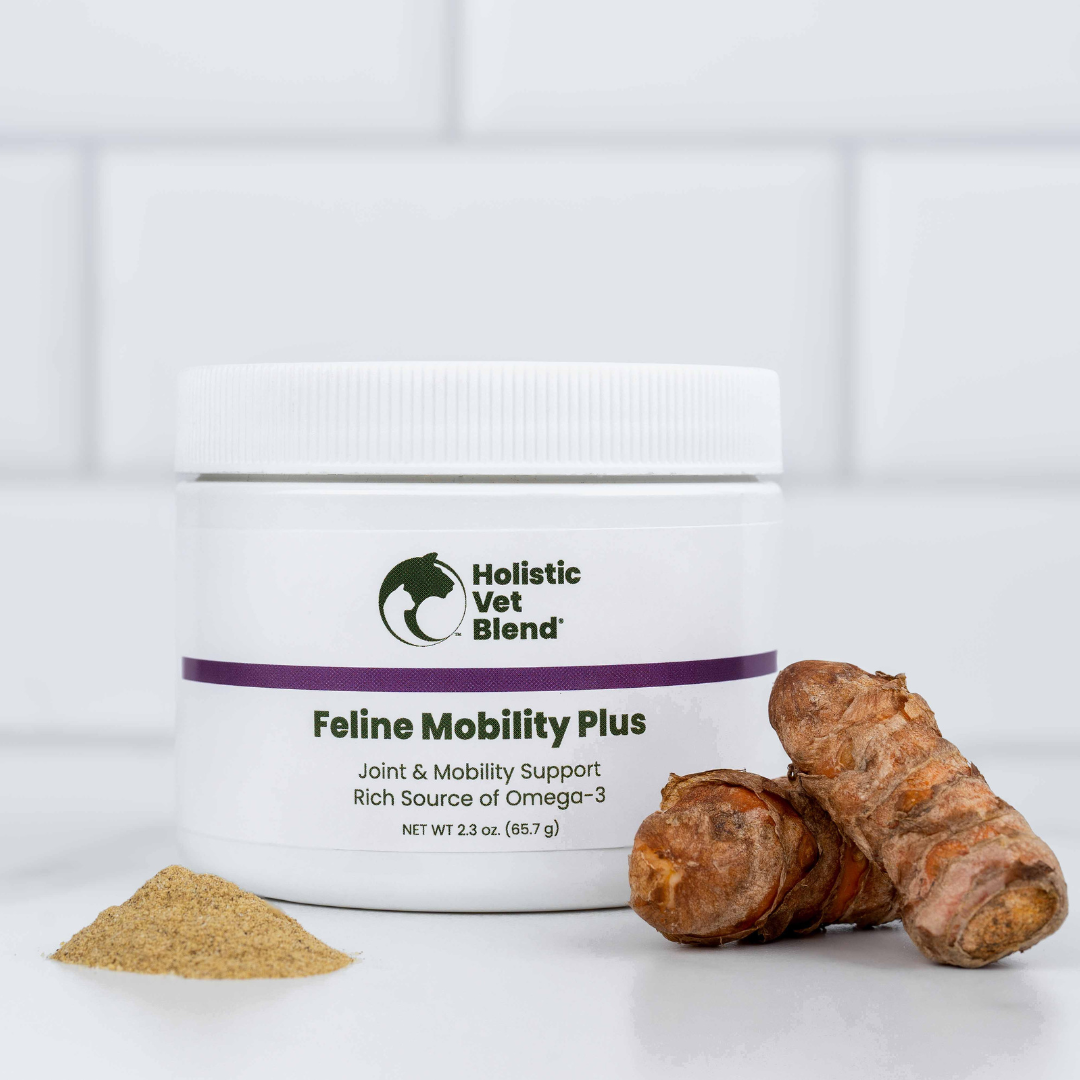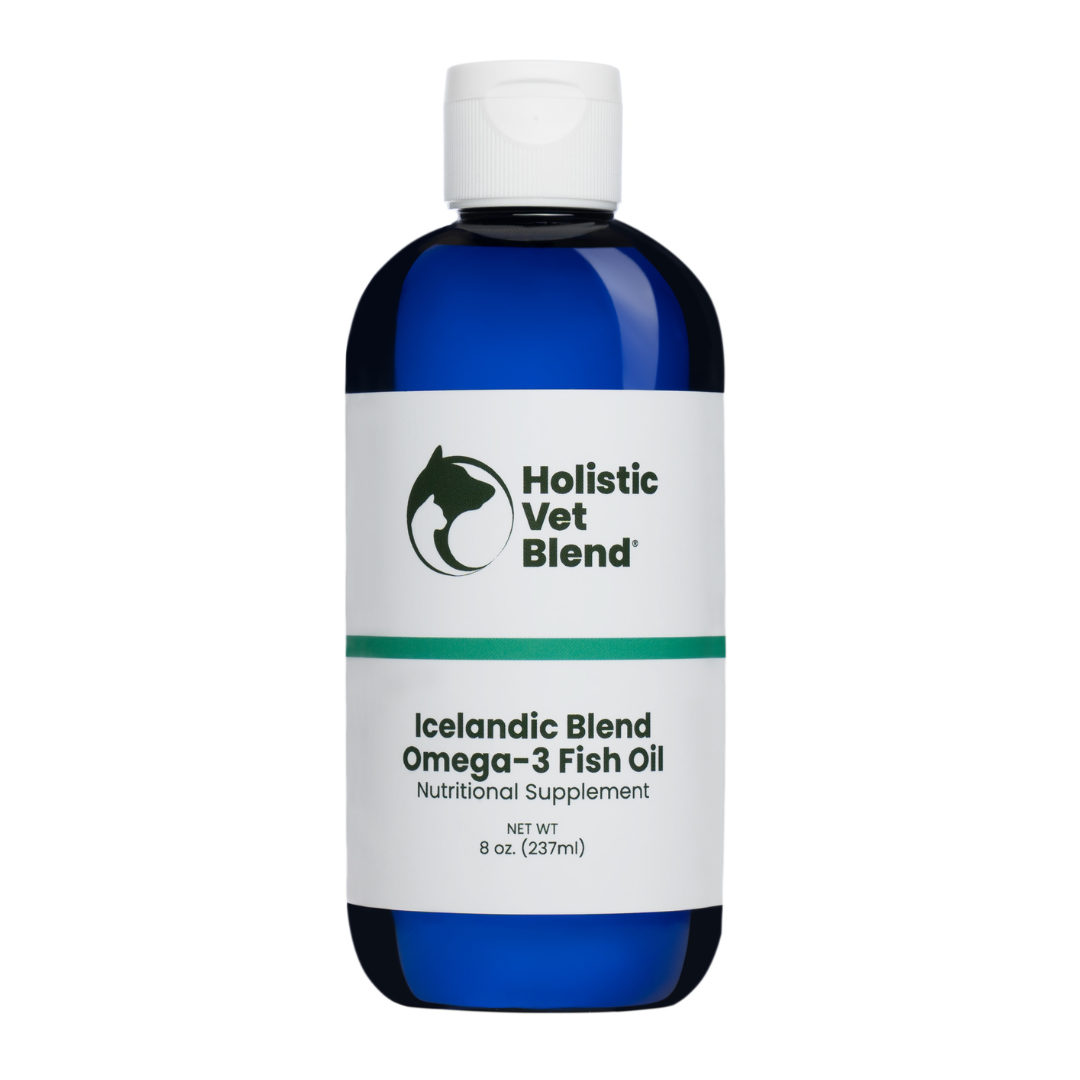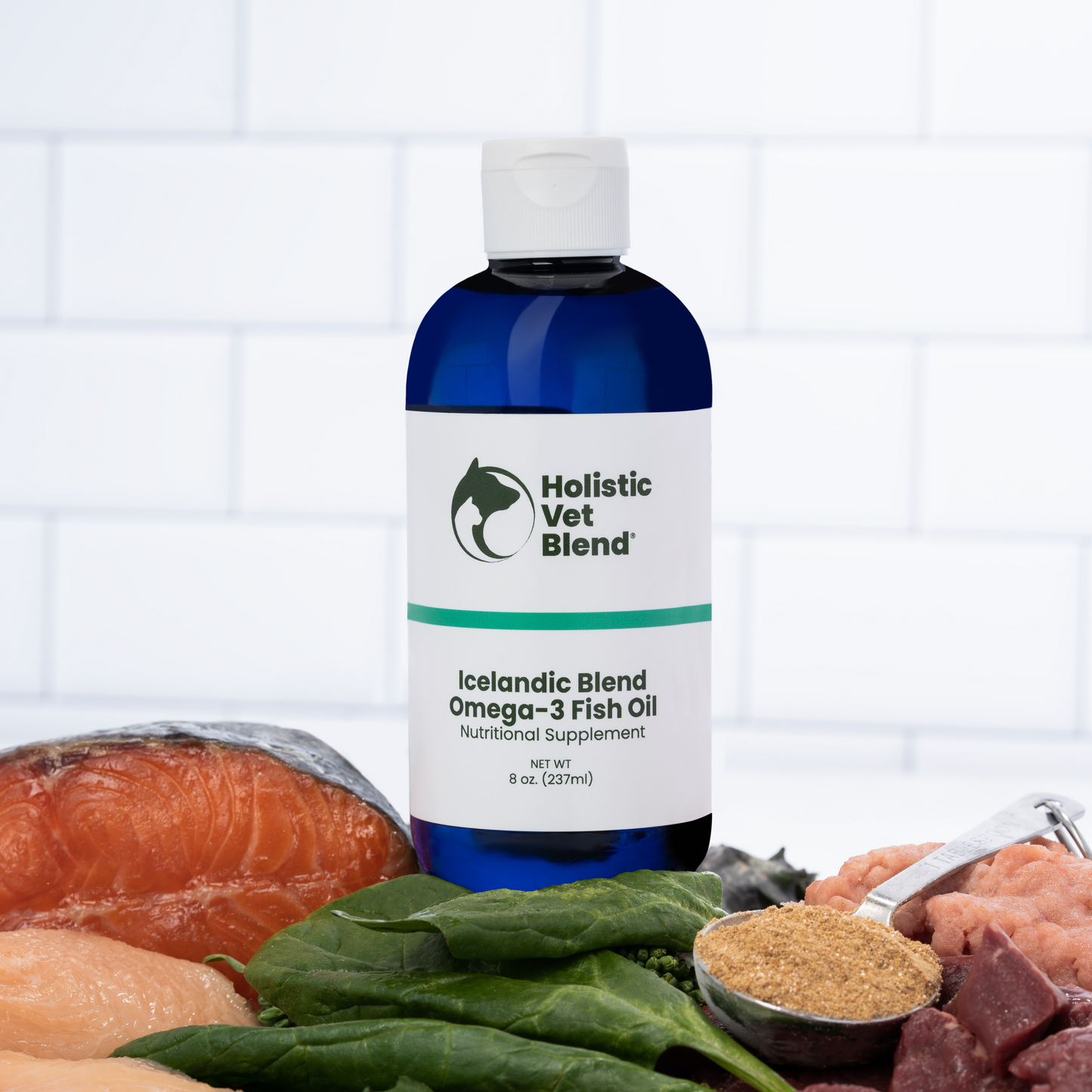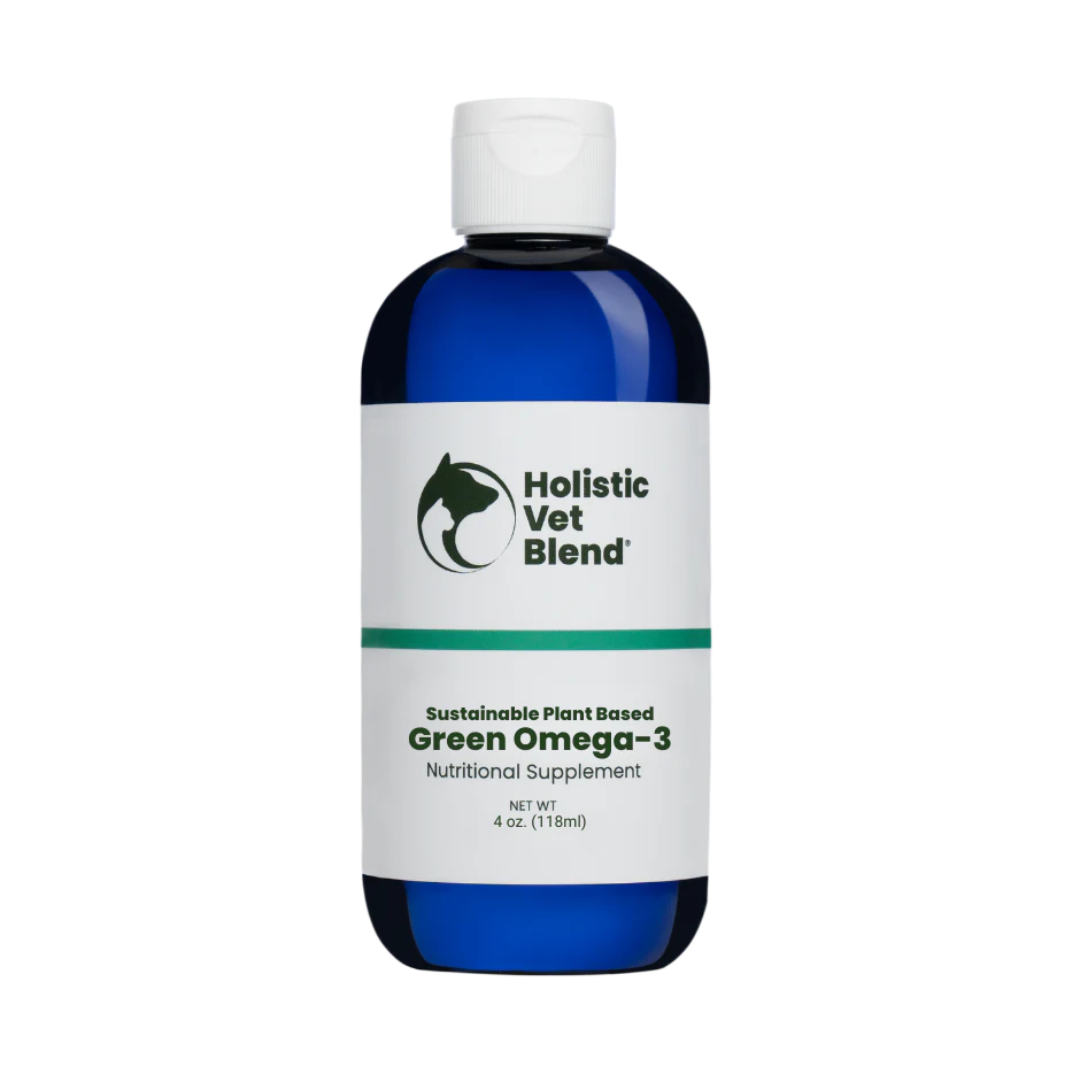
Key Highlights
- True food allergies are not common. However, food intolerances are very common.
- Homemade allergy dog foods offer numerous benefits, including a favorable omega-3/6 ratio which equates to a less inflammatory diet.
- Preparing a homemade diet allows for the avoidance of additives and preservatives found in many commercial dog foods
- A diet trial involves feeding a diet for a period of 6 weeks to 3 months to measure response to a novel protein diet
Introduction
If your dog suffers from allergies, you understand the challenge of finding suitable dog food that doesn't trigger ear infections, constant paw licking and chewing, generalized itchiness, and gastrointestinal issues. Many commercial dog foods often contain numerous ingredients, making it difficult to understand what part of the diet your dog might be reacting to. Common allergens such as beef, chicken, dairy, soy, and wheat gluten make it difficult to find a safe and nutritious option for your furry friend.
Fortunately, making homemade allergy dog foods can be a great solution. By preparing your dog's meals at home, you have full control over the ingredients, allowing you to eliminate potential allergens and provide a balanced and nutritious diet for your dog.
Understanding Dog Food Allergies
Dog food allergies occur when a dog's immune system reacts to certain proteins found in their food. This allergic reaction can lead to a variety of symptoms, including itching, skin infections, digestive upset, and more. The immune system mistakenly identifies certain proteins as harmful and produces antibodies to fight against them, resulting in an allergic reaction. Understanding the difference between a food allergy and a food intolerance is crucial for properly addressing and managing a dog's immune system response to their food. By making homemade allergy dog foods, you can ensure that your dog's immune system is not being triggered by harmful ingredients and provide them with a safe and nutritious diet.
Identifying Common Symptoms of Food Allergies in Dogs
Recognizing the common symptoms of food allergies in dogs is crucial for proper diagnosis and treatment. Allergy symptoms can manifest in various ways, but there are some key signs to look out for. One of the most common symptoms is itchy skin, which can lead to excessive scratching, licking, and biting of the skin.
Dogs with environmental allergies have very similar symptoms as dogs with food allergies. Many dogs with environmental allergies will improve with a diet change to a fresh, minimally processed diet. This may lead to the conclusion that the dog has a food allergy when it is more likely they have a food intolerance. Changing to a diet that does not promote inflammation will improve overall health. Inflammation in the gut leads to disruption of the gut lining or "leaky gut," which allows allergens in the gut to circulate in the body and cause an immune reaction. Identifying common symptoms of food allergies in dogs, such as itching, redness, and gastrointestinal issues, can help determine if an elimination diet is necessary to address the dog's allergy symptoms.
The Role of Diet in Managing Dog Allergies
Diet plays a crucial role in managing dog allergies. One approach is to use a novel protein source, which is a protein that your dog has not been exposed to before. This helps to reduce the risk of triggering an allergic reaction.
Conducting a food trial can help identify specific food allergens by eliminating potential triggers, and gradually reintroducing them to the diet. This process allows you to pinpoint the exact ingredient or ingredients that are causing the allergic reaction, helping you to adjust your dog's diet to their specific needs.
Prescription Diet or Homemade Therapeutic Diet?
When it comes to choosing between prescription or therapeutic diets and homemade therapeutic diet recipes for pets, several factors come into play, namely cost, ingredients, and convenience. Each option has its advantages and can be the right choice depending on the pet's health needs, the owner's lifestyle, and their commitment to their pet's nutrition.
Cost
Prescription Diets: These diets are specifically formulated for pets with certain health conditions and are typically sold through veterinarians. While they are convenient and backed by scientific research, they can be more expensive than standard pet food due to their specialized ingredients and the research that goes into developing them.
Homemade Therapeutic Diets: Preparing your pet's food at home can often be more cost-effective, especially if you can buy ingredients in bulk or source them from a local market. However, it's crucial to note that these diets should be formulated or approved by a veterinarian or a pet nutritionist to ensure they meet your pet’s specific health requirements.
Ingredients
Prescription Diets: The ingredients in prescription diets are chosen for their therapeutic properties to address specific health issues. Some pet owners are concerned about the use of by-products, grains, or other fillers in some prescription diets.
What are Hydrolyzed Protein Diets? As with any dietary choice, there are pros and cons to consider.
Essentially, this diet involves breaking down proteins into their smallest forms, designed to make them less "visible" to your pet's immune system, thereby reducing the likelihood of allergic reactions. It's akin to transforming a complex puzzle into individual pieces so small they can't cause any trouble.
Homemade Therapeutic Diets: Preparing a homemade diet allows you to have control over the ingredients, whether they be organic, humanely reared, or clean ingredients. Also, homemade diets do not come with packaging waste.
But, as with any dietary choice, there are pros and cons to consider.
Pros of Hydrolyzed Protein Diets
1. Hypoallergenic: The primary benefit of hydrolyzed protein diets is their hypoallergenic nature. In these diets, proteins are broken down (hydrolyzed) into such small components that the immune system no longer recognizes them as allergens. This process significantly reduces the risk of allergic reactions, making these diets an excellent choice for pets with food sensitivities. Additionally, the Royal Canin Veterinary Diets Hydrolyzed Protein Kibble draws the bulk of its protein from hydrolyzed soy protein, making it a suitable option for dogs with meat allergies.
2. Veterinary Recommended: Many veterinarians recommend hydrolyzed protein diets for managing and diagnosing food allergies in pets. In theory, they would be less likely to trigger allergic reactions, providing peace of mind to pet owners.
Cons of Hydrolyzed Protein Diets
1. Source of Proteins: A surprising fact that many pet owners are unaware of is that some hydrolyzed protein diets are made using less conventional sources, such as hydrolyzed chicken feathers. While the hydrolyzation process breaks down the proteins into non-allergenic components, the idea of feeding pets chicken feathers can be off-putting for some. It's important to understand that while unconventional, these protein sources undergo rigorous processing to ensure they're safe and nutritious for pet consumption.
2. Traces of Chicken: For pets with severe allergies, even trace amounts of the original protein source can cause issues. While the hydrolyzation process is designed to minimize this risk, the possibility of trace elements remaining can be a concern for pets with extreme sensitivities.
3. Cost: Hydrolyzed protein diets are often more expensive than traditional pet foods due to the complex processing involved in making them hypoallergenic. This cost factor can be a significant consideration for pet owners.
4. Taste: Proteins' complexity gives them their taste. Hydrolyzed diets, essentially the building blocks of proteins, may not be as palatable or tasty to many pets.
Convenience
Prescription Diets: These are the go-to for convenience. They come pre-formulated, so there's no need to spend time preparing meals daily. For busy pet owners, this can be a significant advantage.
Homemade Therapeutic Diets: Requires time and effort, from planning meals to shopping for ingredients and cooking. However, for those who prioritize a hands-on approach to their pet's nutrition, this can also be a rewarding process.
Homemade Therapeutic Diets: One major advantage is the control over the quality of ingredients. You can choose to include fresh, high-quality proteins, vegetables, and grains, tailoring the diet to your pet’s preferences and nutritional needs based on the recipe or your veterinary nutritionist's advice. This approach supports the use of whole foods and can avoid additives or preservatives.
The Benefits of Homemade Allergy Dog Foods
Homemade allergy dog foods offer several benefits for dogs with allergies. One important advantage is the ability to control the ingredients and ensure that only hypoallergenic foods are included. Homemade dog foods also allow you to maintain a proper omega-3/6 ratio, which can help reduce inflammation and support the immune system. Furthermore, homemade dog foods eliminate the use of additives and preservatives found in commercial dog food, which can trigger allergies and sensitivities. By preparing homemade allergy dog foods, you can provide your dog with a nutritious and tailored diet that meets their specific dietary needs, including the best dog food for skin allergies.
Lower Omega-6/3 Ratio and Its Impact on Inflammation
Maintaining a proper omega-3/6 ratio in your dog's diet is important for managing allergies. Omega-3 fatty acids, found in foods like fish oil and flaxseed oil, have anti-inflammatory properties and can help reduce inflammation in dogs with allergies. By including foods rich in omega-3 fatty acids in your homemade allergy dog foods, you can provide your dog with the necessary nutrients to support their immune system and reduce allergy-related inflammation. This can lead to a reduction in symptoms and an overall improvement in your dog's health and well-being. It's important to consult with a veterinarian to determine the appropriate amount of omega-3 fatty acids for your dog's specific needs.
Avoiding Additives and Preservatives Found in Commercial Dog Food
Commercial dog food often contains additives and preservatives that can trigger allergies in dogs. These additives and preservatives are used to enhance the taste, texture, and shelf life of the food, but they can also cause adverse reactions in dogs with allergies. By preparing homemade allergy dog foods, you can eliminate the use of these additives and preservatives, providing your dog with a cleaner and healthier diet. It's important to carefully read the labels of commercial dog food and avoid any products that contain specific ingredients that may trigger your dog's allergies. By making homemade allergy dog foods, you have full control over the ingredients and can ensure that only hypoallergenic foods are included.
Selecting the Right Ingredients for Allergy-Friendly Meals
When selecting ingredients for allergy-friendly meals, it's important to choose those that your dog has not eaten before. Allergies usually are in response to proteins in most cases. Hypoallergenic diets for dogs with allergies often involve using novel protein sources, such as those found in hypoallergenic dog foods, which are proteins that your dog has not been exposed to before.
Common options include turkey, rabbit, bison, or venison, as these proteins are less likely to trigger an allergic reaction as they are not included in many commercial dog foods. It's also important to choose single protein sources, meaning that only one type of protein, such as animal protein, is used in each meal.
This helps to identify which proteins your dog may be allergic to and allows for easier elimination if necessary.
Step-by-Step Guide to Making Homemade Allergy Dog Foods
Here is a step-by-step guide to help you navigate the process of making a recipe with the Holistic Vet Blend Limited Ingredient Nutrient Premix.
Homestyle Turkey and Vegetables with Quinoa in The Instant Pot
Ingredients:
|
Novel Protein: 3 pounds |
Turkey |
|
Coconut Oil: 2 Tbsp |
Healthy fat to saute' meat |
|
Vegetable |
1 pound carrot |
|
Vegetable |
8 ounces of broccoli |
|
5 cups cooked quinoa |
Source of energy, protein |
|
2 Tbsp HVB Limited premix nutrients |
Calcium, vitamins, trace minerals, taurine |
|
1/2 tsp HVB Omega-3 fish oil |
Source of Omega-3 fatty acids |
Directions:
- Add the coconut oil to the pot and saute' the turkey enough to break it up. Add the kale and allow it to wilt some (3-4 minutes).
- Add the carrots and water or broth.
- Set on manual for 4 minutes with the vent closed. Let the contents of the pot vent naturally (20-30 minutes). After the contents have vented, remove the lid and allow the contents to cool.
- Once cooled, add the Omega-3 source of your choice and premix. Package the meals for daily feeding and freeze the rest.
Step 1: Choosing a Novel Protein Source
The first step in making homemade allergy dog foods is choosing a novel protein source. A novel protein is one that your dog has not been previously exposed to, reducing the risk of triggering an allergic reaction. Common novel protein sources include turkey, duck, rabbit, or venison, as these proteins are less commonly found in commercial dog foods.
Step 2: Incorporating Vegetables and Energy Sources
Incorporating a variety of vegetables and energy sources into your homemade allergy dog foods is important as they provide antioxidants, fiber, and energy. Vegetables, such as carrots and broccoli, are rich in vitamins, minerals, and dietary fiber, which can support your dog's overall health and digestion. However, it's important to be mindful of any potential digestive issues your dog may have with certain grains. If your dog has a sensitive stomach, you may need to choose alternative grain options or opt for grain-free recipes.
Step 3: Understanding the Holistic Vet Blend Limited Ingredient Premix
To simplify the process of creating homemade allergy dog foods, you may consider using the Holistic Vet Blend Limited ingredient premix. The premix is specifically formulated to provide all the essential vitamins and minerals that dogs need to complement and balance your meat, vegetables, and energy source.
By using a limited ingredient premix, you can ensure that your dog is receiving the necessary nutrients without the need for additional supplements or complex recipe formulations. It's important to carefully read and understand the instructions provided with the premix to ensure your dog gets the nutrients it needs.
Step 4: Cooking Methods - Instant Pot, Slow Cooker, or Stovetop
When making homemade allergy dog foods, you have several cooking methods to choose from, depending on your preferences and available equipment. Of course, you can cook all the ingredients separately or choose a slow cooker or pressure cooker method for convenience. Although some dogs do well with a transition to a raw diet, like Addiction Outback Kangaroo Feast Raw Dehydrated Dog Food, it is something that I would avoid at this time due to the concern of Avian Influenza being transferred to dogs and cats through uncooked meat. This virus has the potential to mutate and cause serious illness, so for many pets at this time, I am not feeding raw dog food in my rotation.
Whichever method you choose, be sure to follow the cooking instructions and guidelines for the specific recipe to ensure that the food is properly cooked and safe for your dog to consume.
Step 5: Portioning and Storing Homemade Dog Food
Once you have prepared the homemade allergy dog food, it's important to properly portion and store it for future use. Divide the dog food into portion-sized containers or freezer bags to ensure convenient serving and easy storage. Label each container or bag with the date and contents to maintain organization and freshness. A suggested feeding guide for this recipe is:
Deep Dive into Key Ingredients
Certain ingredients play a key role in homemade allergy dog foods and can provide essential nutrients for your dog's health. Turkey is one of my personal favorites for dogs with sensitive digestion.
The Nutritional Benefits of Turkey for Dogs with Allergies
Turkey is a popular protein source often used in allergy-friendly recipes. It is readily accessible at most grocery stores at a good price point, and many dogs with food allergies or intolerances can tolerate turkey without experiencing adverse reactions. Turkey is a lean source of protein and the highest source of taurine of all ground meats. Ollie's Turkey with Blueberries Recipe Fresh Dog Food offers a nutritious and allergy-friendly option for dogs with sensitivities.
Quinoa: A Novel Energy and Protein Choice
Quinoa is a gluten-free alternative and is unique as it is considered a complete protein, meaning it contains all the essential amino acids. It is also rich in fiber, which can help regulate digestion and promote healthy bowel movements.
Additionally, quinoa is a good source of vitamins and minerals, such as magnesium, iron, and zinc, which support overall health and a healthy coat. By incorporating quinoa into homemade allergy dog foods, you can provide your dog with a nutritious and easily digestible grain option that is suitable for their sensitive stomach.
The Healing Powers of Carrots and Broccoli in Dog Diets
Carrots and broccoli offer numerous health benefits for dogs, especially those with skin issues. Carrots are an excellent source of beta-carotene, which is converted into vitamin A in the body. Vitamin A is essential for healthy skin, as it supports cell growth and repair. Carrots also contain antioxidants, which can help reduce inflammation and support a healthy immune system.
Broccoli, on the other hand, is rich in vitamins C and K, cancer fighting sulfurophane, as well as fiber and antioxidants. These nutrients contribute to healthy skin and coat, while the fiber promotes healthy digestion.
Comparing Costs: Homemade vs. Prescription Diets
When considering homemade allergy dog foods, it's helpful to compare the costs of homemade diets versus prescription diets. Homemade diets can be cost-effective, especially when using affordable ingredients and buying in bulk. By making your own dog food, you have control over the ingredients and can choose budget-friendly options.
You can hire a veterinary nutritionist to help formulate a custom diet for your pet.
Prescription diets can be more convenient but expensive, especially for large dogs. They are specifically formulated to meet the dietary needs of dogs with allergies. It's important to weigh the costs versus the benefits and consult with a veterinarian to determine the best option for your dog's specific dietary needs and budget.
Breaking Down the Cost of Homemade Allergy Dog Food
The cost of homemade allergy dog food can vary based on several factors, including the ingredients used (rabbit or alligator can be expensive to source), portion sizes, and the availability of affordable options.
While some ingredients, such as novel protein sources, may be more expensive, there are budget-friendly alternatives that can be used. Buying in bulk and utilizing sales or discounts can also help reduce costs.
Transitioning Your Dog to a Homemade Diet
As a pet parent, transitioning your dog to a homemade wet food diet requires careful planning and consideration. It's important to gradually introduce the new food to avoid digestive upset. Start by mixing a small amount of the homemade dog food with your dog's current food and gradually increase the ratio over a period of several days or weeks. Depending on your pet's needs, you could try 1/4 of the new diet with 3/4 of the old diet for 2-4 days, then increase to 1/2, 3/4, and full transition over a period of 10-14 days. You know your dog, and if transitions are difficult and they are sensitive to anything new, take your time.
During the transition, closely monitor your dog's health and well-being for any changes or reactions. If you notice any adverse effects, consult with a veterinarian to determine the best course of action. By taking a gradual approach and monitoring your dog's health, you can ensure a smooth transition to a homemade diet and provide them with the best possible nutrition.
Monitoring Your Dog's Health During the Transition
During the transition to a homemade diet, it's important to closely monitor your dog's health and well-being. Keep an eye out for any changes in appetite, energy levels, stool consistency, or skin condition. If you notice any adverse effects, such as gastrointestinal upset or allergic reactions, it may indicate that the new diet is not suitable for your dog.
If you have any concerns or questions during the transition, consult with a veterinarian for guidance. By monitoring your dog's health, you can address any issues promptly and ensure a successful transition to a homemade diet.
Adjusting Portions and Ingredients Based on Responses
As you transition your dog to a homemade diet, it's important to pay attention to their responses and adjust portions and ingredients as necessary. Monitor your dog's weight and body condition to ensure they are receiving the right amount of food. If your dog is gaining weight, you may need to reduce the portion sizes or adjust the ingredients to provide more calories. On the other hand, if your dog is losing weight or not gaining enough, you may need to increase the portion sizes or adjust the ingredients to provide more calories for adult dogs.
Safety Tips and Best Practices
When preparing homemade allergy dog foods, it's important to follow safety tips and best practices to ensure that your dog's diet is healthy and nutritionally balanced. Some key tips include using high-quality ingredients, practicing proper food hygiene, and examining the ingredients list to avoid any potential allergens in your dog’s food. If you are unsure of your dog's allergies, consult with a veterinarian for guidance. It's also important to monitor your dog's health and well-being throughout the transition and adjust the diet as necessary. By following these safety tips and best practices, you can provide your dog with the best food that supports their overall health and well-being.
Ensuring Balanced Nutrition in Every Meal
Balanced nutrition is essential in every homemade allergy dog food meal to ensure that your dog receives all the necessary nutrients for optimal health. Include a variety of protein sources, such as novel proteins or hypoallergenic options, to provide essential amino acids. Incorporate a mix of vegetables and grains to provide vitamins, minerals, and dietary fiber. Consider using a holistic vet blend limited ingredient premix to ensure that your dog receives the necessary vitamins and minerals in the right proportions. It's also important to include essential fatty acids, such as omega-3 and omega-6, which support a healthy immune system, skin and coat. By ensuring balanced nutrition in every meal, you can provide your dog with a well-rounded and nutritionally complete diet.
When to Consult a Veterinarian
Consulting a veterinarian is important when making dietary changes for your dog, especially if they have allergies. A veterinarian can provide guidance on the best approach to managing your dog's allergies and help you create a suitable diet plan. They can also recommend specific veterinary diets that are formulated to meet the nutritional needs of dogs with allergies. Additionally, a veterinarian can provide advice on proper portioning, monitoring your dog's health and well-being, and addressing any concerns or complications that may arise. By consulting a veterinarian, you can ensure that your dog receives appropriate and customized care for their specific dietary needs and allergies.
Conclusion
In conclusion, homemade allergy dog foods offer a tailored approach to managing your furry friend's dietary needs. By avoiding additives and preservatives found in commercial options, you can provide a healthier alternative. Understanding the benefits of lower Omega-3/6 ratios and selecting the right ingredients are key steps in this process. Transitioning your dog to a homemade diet requires monitoring their health and adjusting as needed. Remember, consulting a veterinarian for guidance is always wise. With careful planning and attention to detail, homemade allergy dog foods can positively impact your dog's well-being and overall health.
Frequently Asked Questions
Can any dog switch to a homemade allergy diet?
Yes, most dogs can switch to a homemade allergy diet. However, it's important to consult with a veterinarian to ensure that the diet meets their specific nutritional needs. Conducting a food trial can help identify any potential allergens and guide the selection of suitable ingredients for the homemade diet.
How long does it take to see improvements in allergies?
The timeline for improving allergies can vary depending on the dog and the severity of the allergies. In some cases, you may start to see improvements within a few weeks of transitioning to a homemade allergy diet. However, it may take several months for significant improvements to occur. It's important to be patient and monitor your dog's progress during this time.
What are the most common food allergies in dogs?
The most common food allergies in dogs include beef, chicken, dairy, eggs, soy, and wheat. These ingredients are frequently found in commercial dog foods and can trigger allergic reactions in sensitive dogs. By avoiding these common allergens, you can help manage your dog's food allergies.
Are there any risks associated with homemade dog foods?
While homemade dog foods offer many benefits, there are some risks to be aware of. One potential risk is the risk of an unbalanced diet if the homemade food does not provide all the necessary nutrients. It's important to consult with a veterinarian to ensure that the homemade diet is nutritionally balanced and meets your dog's specific needs.
